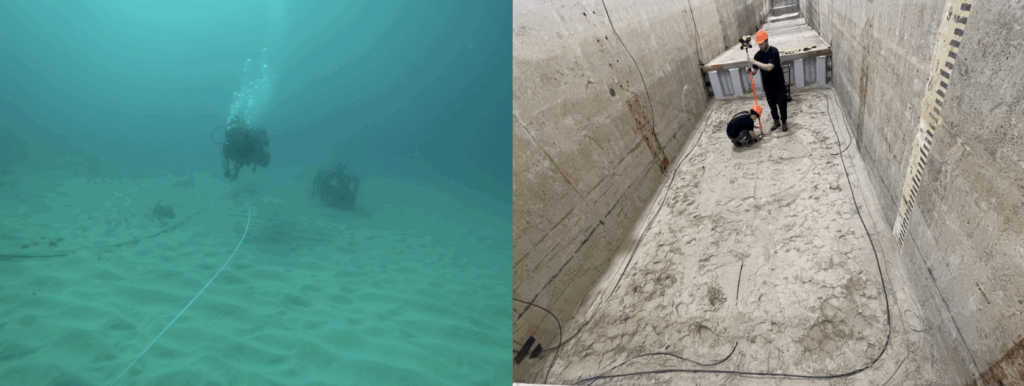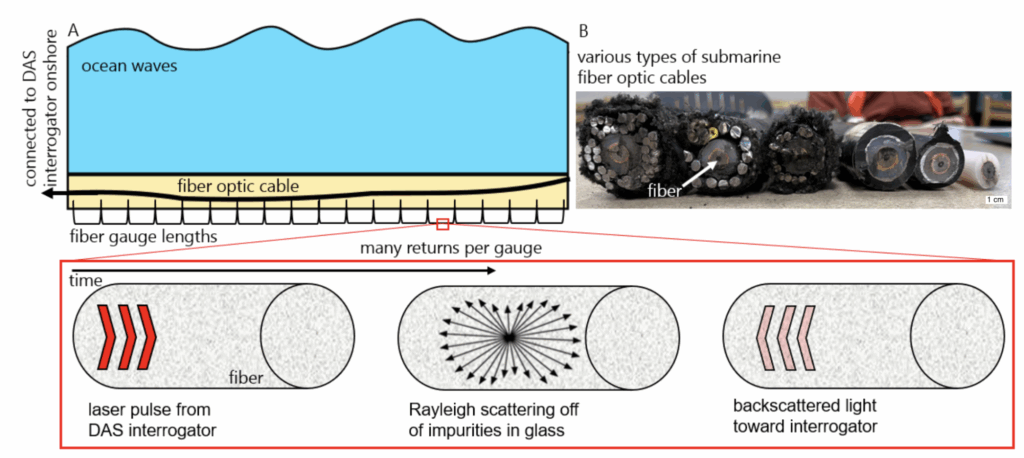The Oregon coastline has tremendous ecological and economic value, and many regions of the coast are threatened by storm activity compounded by rising sea levels. Effective coastal protection requires knowledge of shoreline changes due to waves. On sandy beaches, waves can move sediment by creating pressure gradients above and within the seafloor. These seabed processes evolve rapidly in both time and space, making it challenging to directly measure and understand the underlying physics. In fall 2025, we will be examining seabed processes on Rockaway Beach, OR using novel, fiber-optic sensing techniques through a partnership with the Rockaway Beach Resort. We will temporarily install a fiber-optic cable and collect unprecedented measurements of beach processes.

Usually pressure is measured with individual, self-contained sensors that are buried in the sand. These types of measurements give information about a single location across the beach and are time/labor intensive to install. Distributed Fiber-optic Sensing is a type of technology that provides a measurement of the environmental conditions at many locations along a fiber-optic cable, such as a telecom cable. Distributed Acoustic Sensing (DAS) is a type of fiber-optic sensing that has recently been used to measure pressure from waves in the ocean. A DAS instrument attached to one end of a fiber-optic cable continuously records the strain on the cable at many locations. This cable strain is generated by vibrations and pressure signals from physical processes, including waves. Measurements of cable strain can be continuously collected every meter for 10s of kilometers, providing a significant improvement in the spatial resolution of pressure measurements. This work is funded by NSF (https://www.nsf.gov/awardsearch/showAward?AWD_ID=2407466&HistoricalAwards=false).

Please come stop by and chat with us when we’re working on the beach. We will be installing buried sensors and a temporary cable in early October. Data will be collected for a month.


